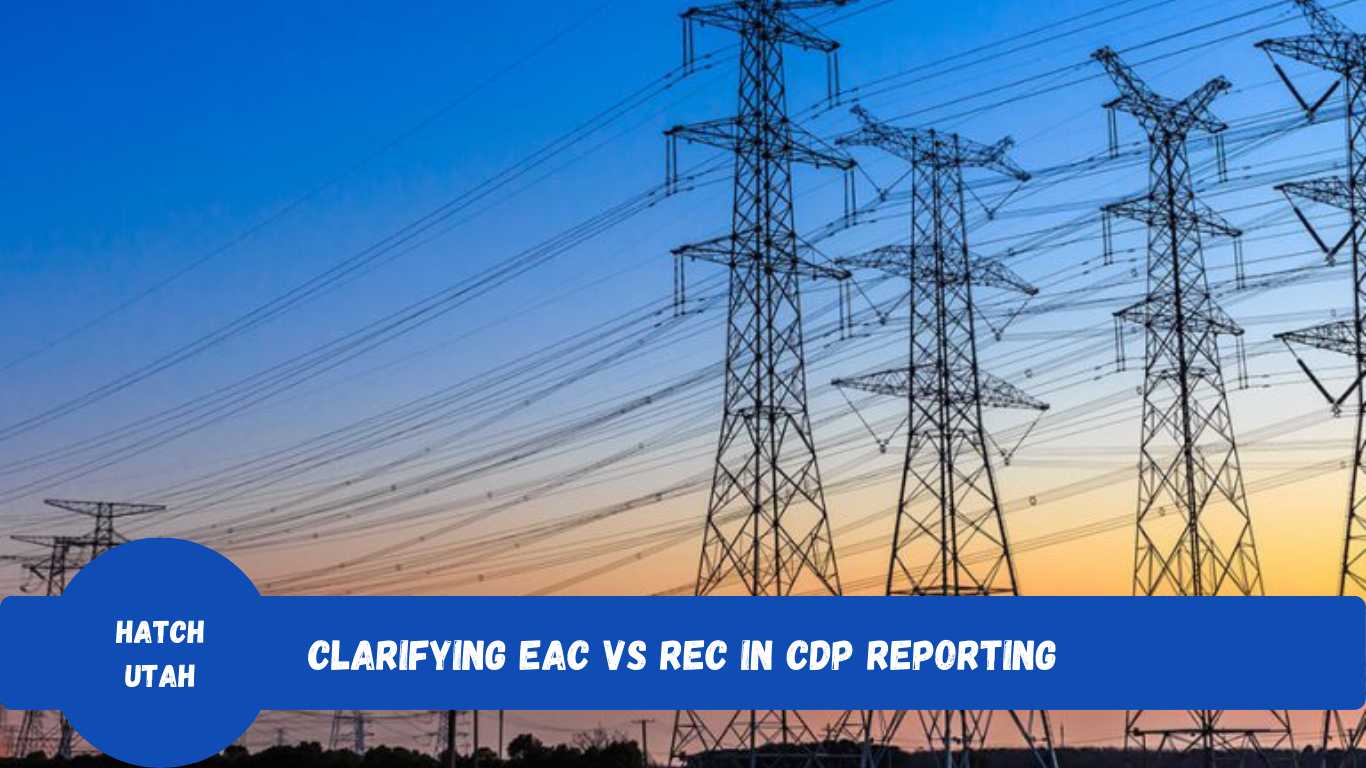Within the field of corporate sustainability, reporting systems such as the Carbon Disclosure Project (CDP) have grown to be indispensable instruments for companies revealing their environmental footprint. Accounting for energy use and emissions is a fundamental component of CDP reporting; words like Energy Attribute Certificates (EACs) and Renewable Energy Certificates (RECs) frequently surface here. Accurate and open CDP reporting depends on a knowledge of the distinctions between EAC vs REC. The differences between these two certifications, the difficulties they cause in CDP reporting, and ways to address these difficulties are investigated in this paper.
What are EACs and RECs?
Organizations employ Renewable Energy Certificates (RECs) and Energy Attribute Certificates (EACs) to claim using renewable energy. Still, they work in somewhat distinct settings and areas. A more general name for several certifications reflecting the environmental qualities of renewable energy is EACs. Certificates including Guarantees of Origin (GOs) in Europe and International RECs (I-RECs) in worldwide markets outside North America fall under this category.
Conversely, RECs especially refer to certificates used in North America proving the generation of one megawatt-hour (MWh) of energy from a renewable source. Although they differ in geographic application and the particular renewable energy standards they reflect, both EACs and RECs are vital for businesses trying to correctly record their use.
The Role of EACs and RECs in CDP Reporting
Companies which utilize CDP reporting must precisely reveal their greenhouse gas emissions and energy use. This reporting method depends much on EACs and RECs as they enable businesses to support claims of using renewable energy. Organizations can lower their stated carbon footprint by buying and retiring these certificates, therefore assigning some of their energy usage to renewable sources.
The difficulty, though, is correctly accounting for and reporting these certificates. Using EACs instead of RECs without thinking through their regional and regulatory differences might result in erroneous CDP reporting if one misunderstands their differences. This can discredit a company’s environmental claims and cause possible stakeholder scrutiny.
Challenges in Reporting EACs and RECs
Making sure EACs and RECs are used correctly and differentially is one of the main difficulties in CDP reporting. Businesses running several sites might find it difficult to negotiate the several certificate kinds and their particular reporting requirements. Lack of a uniform worldwide approach to energy attribute certification adds to the complexity and challenges multinational companies to keep uniformity in their CDP reports.
Moreover, the timing of certificate purchases and retirements is sometimes unclear. CDP mandates that the actual usage period reflect the renewable energy promises. Purchases of certificates or retirements outside the reporting period may cause disparities in the recorded statistics. Either underreporting or overreporting of renewable energy consumption might follow from this imbalance.
Solutions for Accurate EAC and REC Reporting
Businesses must manage EACs and RECs methodically if they want to overcome these obstacles. First of all, sustainability teams have to be taught the particular traits and variations between EACs and RECs. Knowing the local relevance and the guidelines controlling these certifications will assist to prevent mistakes in CDP reporting.
Furthermore vital is putting strong tracking and administration mechanisms for EACs and RECs into use. These systems should let businesses monitor certificates bought, retirements, and their fit with times of energy usage. Companies can guarantee accuracy in their CDP entries by making sure the certifications line the reporting period.
Using outside third-party verifying companies is another fix. Independent verification offers another degree of confidence that the stated data is correct and that the company’s EAC and REC usage follows CDP rules. In the view of investors and other stakeholders, this can also help to strengthen the validity of the company’s sustainability assertions.
Conclusion
Accurate CDP reporting depends on clear clarification of the variations between EACs and RECs. These certificates present difficulties that might complicate reporting even if they are strong instruments for proving use of renewable energy. Companies may overcome these obstacles and guarantee that their CDP reports are accurate and open by knowing its subtleties, putting good management procedures into use, and getting outside validation. By doing this, they not only improve their performance of sustainability but also gain confidence among relevant parties.









